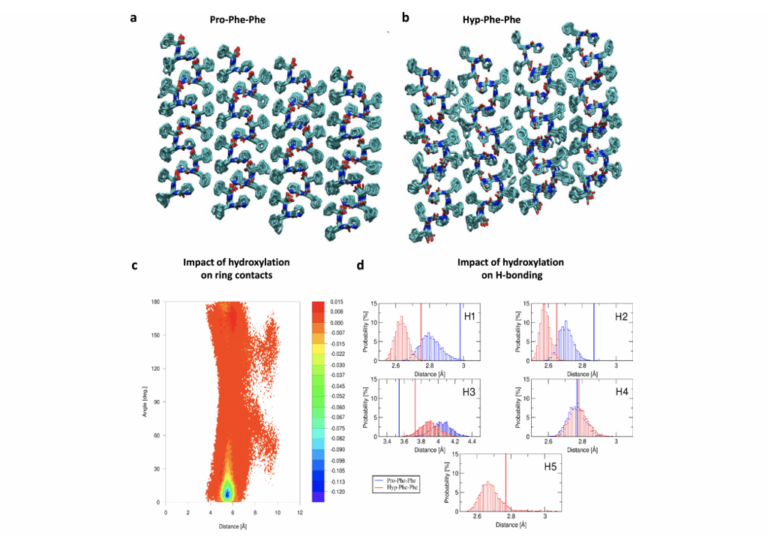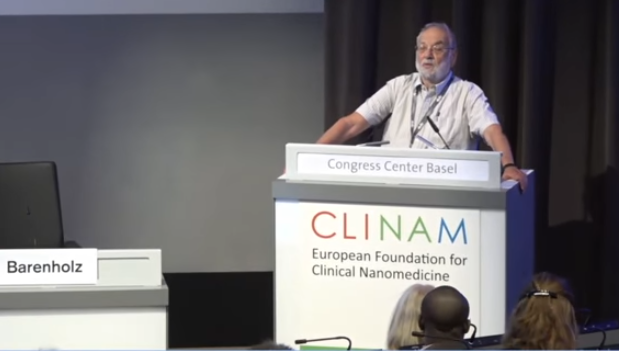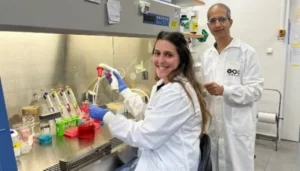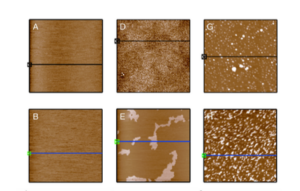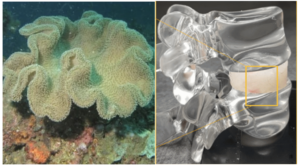Technion (Israël) : les nanoparticules contre le cancer pourraient guérir les plantes malades

[:fr]
Les particules, appelées liposomes, sont des poches sphériques nanométriques qui peuvent délivrer des médicaments à des parties spécifiques du corps. Maintenant, des chercheurs ont rempli ces petits paquets de soins avec des nutriments fertilisants. Ces nouveaux liposomes se déposent sur les feuilles des plantes plus facilement que les nutriments nus. Cela permet aux nanoparticules de donner aux plantes malnutris, une vigueur plus puissante que les molécules flottantes librement, lors des pulvérisations d’éléments nutritifs ordinaires.
Chaque liposome est une sphère creuse d’environ 100 nanomètres de diamètre. Il est constitué de molécules de graisse extraites des plants de soja. Une fois qu’une feuille a absorbé ces nanoparticules, les liposomes se propagent jusqu’aux cellules des autres feuilles, et jusqu’à ses racines, où les enveloppes graisseuses se décomposent et libèrent leur charge moléculaire de nutriments.
Des tests pour vérifier leur efficacité
Les chercheurs du Technion (Institut israélien de technologie à Haïfa) ont d’abord exposé des plants de tomates à des liposomes contenant un métal des terres rares appelées europium, ou à des molécules d’europium flottant librement. L’europium n’existe pas naturellement dans les plantes ou dans le sol, il est donc facile de déterminer la quantité que cet élément a été absorbées par les plantes après le traitement. Trois jours après l’exposition à l’europium, les plantes traitées avec ces liposomes avaient absorbé jusqu’à 33% des nanoparticules, alors que les plantes exposées à l’europium flottant en avaient absorbé moins de 0,1%.
Les chercheurs ont ensuite vaporisé des plants de tomate déficients en fer et en magnésium avec un aérosol standard, contenant du fer et du magnésium, ou une solution contenant des liposomes remplis de ces nutriments. Deux semaines plus tard, les feuilles des plantes traitées avec ces nutriments flottants librement étaient teintées de jaune et recroquevillées, alors que les plantes traitées au liposome arboraient des feuilles saines et vertes (voir l’image à droite).
Comment ça fonctionne ?
Avi Schroeder, ingénieur chimiste au Technion et ses collègues ne savent pas exactement pourquoi les liposomes sont mieux absorbés pour les plantes que les nutriments librement répandus, « mais les sprays qui contiennent des liposomes chargés en nutriments pourraient aider les agriculteurs à revigorer les plantes en moins bonnes santé, et ce, plus efficacement que les mélanges existants« , explique Avi Schroeder.
Selon Ramesh Raliya, chercheur en nano-biotechnologie à l’Université de Washington à St. Louis qui n’était pas impliqué dans ce travail, il serait nécessaire de tester ce produit à base de liposomes sur une variété de végétaux avant de pouvoir les utiliser en grand nombre, parce que les pores sur les feuilles où les liposomes sont supposés entrer, peuvent aller de 50 à 150 nanomètres de diamètre. Par conséquent, si les pores d’une plante sont plus petits que 50 nanomètres, les liposomes ne pourront pas passer à l’intérieur d’une plante.
De plus, Mariya Khodakovskaya, biologiste à l’Université de l’Arkansas à Little Rock, se méfie du coût potentiel de cette nouvelle approche. Façonner des liposomes coûte cher, alors que ce n’est pas un problème pour la fabrication de médicaments à base de liposomes, car cela ne nécessite qu’une petite quantité de nanoparticules, mais pour que toute nouvelle pratique agricole soit adoptée, cela doit être produit massivement, et doit être bon marché.
Un espoir existe
Mais si ces chercheurs arrivent à produire des nanoparticules moins coûteuses, cette nouvelle façon de traiter les plantes pourrait avoir plusieurs avantages, notamment traiter des plants malades, et nécessitant des traitements bien spécifiques, comme la fameuse maladie à phytoplasmes, où des bactéries sans parois cellulaires, peuvent même être dangereuses pour l’être humain.
Car malgré tous les efforts pour éradiquer cette maladie, il n’existe aucun moyen réellement efficace pour guérir les plants malades. Les liposomes étant mieux absorbés par les plantes, elle pourraient donc devenir un traitement contre cette maladie.
De futures études seront nécessaires avant de savoir si ce type de traitement sera efficace. Cette nouvelle approche est une source d’espoir pour de nombreux agriculteurs.
Publication dans Nature, 17 mai 2018
Sources Technologie Media et Science News
[:en]
Synthetic nanoparticles used to fight cancer could also heal sickly plants.
The particles, called liposomes, are nanosized, spherical pouches that can deliver drugs to specific parts of the body (SN: 12/16/06, p. 398). Now, researchers have filled these tiny care packages with fertilizing nutrients. The new liposomes, described online May 17 in Scientific Reports, soak into plant leaves more easily than naked nutrients. That allows the nanoparticles to give malnourished crops a more potent pick-me-up than the free-floating molecules in ordinary nutrient spray.
Each liposome is a hollow sphere about 100 nanometers across, and is made of fatty molecules extracted from soybean plants. Once a plant leaf absorbs these nanoparticles, the liposomes spread to cells in the plant’s other leaves and its roots, where the fatty envelopes break down and release their molecular cargo.
On the mend
Compared with malnourished plants treated with standard spray containing free-floating nutrients (left), sickly plants treated with nanoparticle-enclosed nutrients (right) made a stronger recovery after two weeks.
Researchers first exposed tomato plants to either liposomes packed with a rare earth metal called europium, or free-floating europium molecules. Europium doesn’t naturally exist in plants or soil, so it’s easy to trace how much of this element plants soaked up after treatment. Three days after exposure, plants treated with liposomes had absorbed up to 33 percent of the nanoparticles. Plants exposed to free-floating europium took in less than 0.1 percent of the molecules
The researchers then spritzed iron- and magnesium-deficient tomato plants with either a standard spray containing iron and magnesium, or a solution containing liposomes packed with those nutrients. Two weeks later, the leaves on plants treated with free-floating nutrients were still tinged yellow and curled. Plants that received liposome treatment sported healthy, green leaves.
Avi Schroeder, a chemical engineer at the Israel Institute of Technology in Haifa, and colleagues don’t know exactly why liposomes are more palatable to plants than plain nutrients. But sprays that contain nutrient-loaded liposomes could help farmers rejuvenate frail plants more efficiently than existing mixtures, Schroeder says.
Liposome-based spray would need to be tested on a variety of vegetation before it could enter widespread use, says Ramesh Raliya, a nanobiotechnology researcher at Washington University in St. Louis not involved in the work. That’s because the pores on leaves where liposomes are assumed to enter plants can range from 50 to 150 nanometers across. If a plant’s pores are smaller than 100 nanometers, the liposomes can’t squeeze inside.
Mariya Khodakovskaya, a biologist at the University of Arkansas at Little Rock, is wary of the potential cost of this new technique. Fashioning liposomes is expensive. That’s not a problem for making liposome-based medication, which requires only a small amount of nanoparticles. But for any new agricultural practice to take root, she says, “it has to be massive, and it has to be cheap.”
Publication in Nature, May 17th, 2018
Source Science News
[:]

